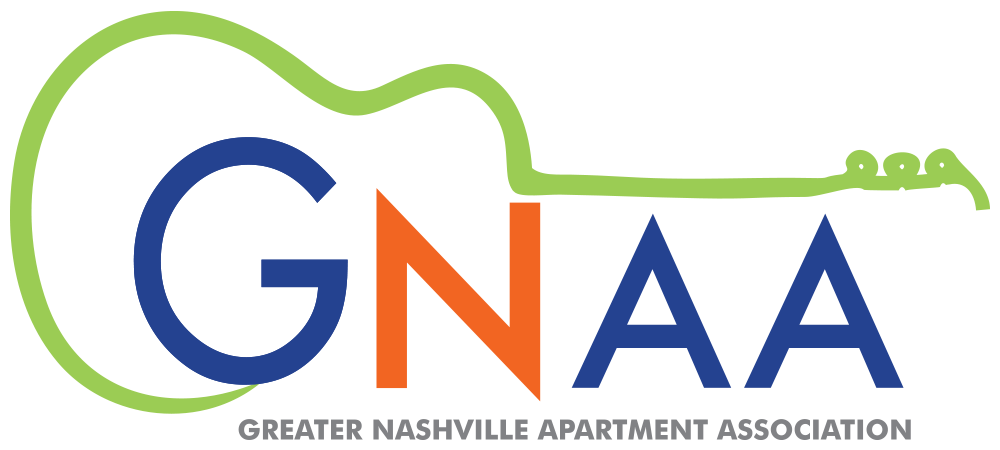Automation Boosts Maintenance Efficiency, Effectiveness Image

By Ed Finkel |
Technology solutions continue to gain traction in multifamily housing maintenance.
A couple of years ago, Tropicana Properties Inc. in El Paso, Texas, wanted to automate aspects of its maintenance operations, but company leaders knew that their hard-working staff, handy as they were with tools of the trade, did not have strong enough computer skills.
Then, they had a brainstorm. “We realized that most of our maintenance guys were Johnny-on-the-spot with their phones,” says President and Owner Deme-trio Jimenez. “They could communicate via email and via text. They were even doing sophisticated things like clocking-in and clocking-out.”
The company uploaded a timekeeping system to handle the latter, “which we thought was going to entail tons of training, and it did, but not to the extent as we initially thought,” he says. Encouraged by the success of that initiative, Tropicana took the further step of tapping into a business intelligence (BI) platform to automate a series of other maintenance-related functions from work orders to make readies to expense tracking.
Many other rental housing companies have taken similar steps in their maintenance departments, automating whatever functions they can to make themselves more efficient and effective—with the goals of cutting costs, deploying staff in the most optimal manner and hopefully boosting retention of both staff and residents.
‘One-Stop Shop for Communicating’
Dallas-based Summit Property Management has streamlined its logbooks for inspections and work orders using property management software. Service managers have laptops and maintenance technicians have an app on their phones that they use to remotely add notes, take pictures and ultimately close service requests, all in integrated fashion, says Bob Madrulli, Regional Maintenance Director.
“It’s a one-stop shop for responding and communicating with residents, as well as bringing information up to our corporate level that we can review and run reports on—to see how quickly and efficiently things are happening at the site level,” he says. “There have been growing pains in certain instances, getting guys familiar with using the technology—bringing them up to speed is one of the most challenging parts. But once they get familiar and embrace it, it works pretty well.”
The company moved to a paperless environment in which all inspections are automated so they pop up as a work order, while pool logs are also automated “so the maintenance guys can focus on what they’re doing on site,” says Sarah Covington, Operations Specialist with Summit. “There are reminders, once daily, to complete tasks, on their phone.”
Madrulli has implemented monthly calls with service managers to review metrics on various properties to ensure that service re-quests including move-ins are being closed out in a timely fashion and that properties are all staffed appropriately so they can keep up.
“Being able to check on reports remotely from the corporate office is a huge advantage,” he says. “I’m not going onsite to chase down a logbook anymore. You can see the heartbeat of the property—who’s falling behind and not keeping up with tasks.” He adds that the company has lost a few maintenance techs who could not get up to speed with the digital age. “It’s made us stronger in that sense—we’re relying on stronger leadership in those roles.”
Covington expects Summit to continue to expand its use of automation, although at a moderate pace. “We are one year into this,” she says. “We’re seeing what that tool can do for us, and then possibly we will branch out to other ideas and see how we can better our teams going forward. You don’t want to throw too much at a maintenance department at once.”
Madrulli says the online logbooks enable the company to stay on top of preventative maintenance, which Summit’s insurance company appreciates. “The documentation and processes that we’re able to show are going to help with insurance renewal,” says Char McCurdy, President of Summit. “We’re taking this documentation to say, ‘Yes, we do a light check, performed monthly, and here’s why.’ Those kinds of things will help with potential liability issues.”
Piloting with a ‘People-First Approach’
Weidner Apartment Homes, a national company based in Kirkland, Wash., has taken a “people-first approach” to finding efficiencies with maintenance automation, says John Bailey, Regional Director, who’s based in Milwaukee. “We’re looking at what people like to do, what current associates are skilled at and where they want to spend their time,” he says. “You get efficiencies when people have higher job satisfaction and engagement, and they’re doing what they love to do.”
Over the past six to 12 months, the company has been piloting approaches to use automation around dispatch pods, not just community by community, but within groups of communities and even whole regions, to enable staff to specialize in what they like to do—and steer them away from pain points, Bailey says.
“They can cover a larger geographic area of properties if they just focus on HVAC, if that’s what they are more skilled at and where they want to spend their time,” he says. “Instead of three separate communities with three separate teams, we’re looking at it as one large team.” Layered on top of that, Weidner is piloting systems that help track this delegation of duties as well as time- stamping, keeping in mind that with tech platforms, “efficiencies arise from how quickly information comes through, and how accessible and transparent the information is to all involved,” he adds.
Weidner has begun to learn what works and what doesn’t, although at this early stage, the data is primarily anecdotal, Bailey says. “It can help with recruit-ing and retention of people because there are some instances where, if we can… guarantee you’re only going to be working on HVAC, or painting, or some specific duty, people are more attracted to that,” he says. “We’re finding opportunities to pilot tech platforms to fill in the gaps of the new structure of each team.”
Move to Mobile Facilities App
Fort Worth, Texas-based Olympus Property has been using a mobile facilities app for several years, through which the nationwide rental company handles inspections, work orders, make-readies and inventory, says Julia Lawhorne, Vice President, Operations Support and Technology.
“The majority of our technicians are using the facilities app more than 90% of the time for all of their service requests, and work orders, and make-readies, and inspections,” she says. “It saves time on the property, not having to come in and pick up paper work orders. They have them at their fingertips.”
Tapping into Business Intelligence
Tropicana Properties uses BI across its 39 properties and about 52 maintenance employees cover many of these same bases, Jimenez says, including scheduling, timekeeping and inventory, although the latter remains a “work in progress.”
Knowing the time spent, product re-placed or repaired, and overall costs has been “incredible,” Jimenez says, adding that “we’re trying to integrate with one of our vendors so we can order parts right off the BI platform, if we don’t have it in the warehouse.”
After getting underway with work orders, Tropicana has evolved to use BI in make-readies, he says. During a walk-through with a resident, maintenance personnel take photographs of normal wear-and-tear, and what’s “beyond normal,” and write up a report. “We’re getting to where it gives us costs on how much it’s going to be to fix that unit,” Jimenez says. “That generates a move-out report for the family to review and accept or not accept, and we go from there.”
The photographs help to establish the “beyond normal” changes and tamp down security deposit-related disputes. “Photographs speak 1,000 words,” he says. “There’s very little argument when they are shown before and after move-out photos. On top of that, we know what the make-ready is going to cost.… We know almost to the dollar how much we’re spending.”
Jimenez received a report in January that told him how many work orders and make-ready orders the company had fulfilled per property per month in 2023. “I’m in awe of this,” he says. “We can dig down and look at a month—in one month, we had 87 work orders when normally we have half that in similarly sized properties. What’s that about? We can further investigate and analyze the issues and fix processes.… For example, we had a property that’s 184 units, and we had 173 make-readies. That’s [more than] 90 percent turnover. What are we doing wrong? Why are we not retaining the residents on that property?”
That 2023 report will be a benchmark on expenses per property, per unit that will help Tropicana make better decisions for 2024, Jimenez says. He estimates the company can reduce expenses 30% over the first half of the year using the soft-ware, largely due to greater efficiencies in allocating the right team members to the right job.
For example, BI might tell them that two apartments of the same size in similar condition took eight and three hours, respectively, for the make-ready. “We look at the team” on the eight-hour property, he says. “Oh, that’s a new team. We’re able to put efficient veterans on that team so we can see some consistency across our portfolio.”
The experience has made Tropicana more conscious of hiring people who are more tech-savvy, Jimenez says. During interviews, “We ask them, ‘Do you do banking online? Do you do other things online that help your household?’ We’ve hired individuals who are more capable and have the electronic intuition.… We’ve been doing a lot of digital training, and that’s helped in retaining employees. They seem more engaged and more ready to offer suggestions. That’s encouraging.”
The next couple of years will tell the story on how much more efficient Tropicana can get in its maintenance operation, and how much that will improve both employee and resident retention, Jimenez figures.
“I guess ’24 and ’25 will be a good tell-all,” he says. “It makes us work a little harder and, more importantly, we are starting to listen to our maintenance guys who are in the trenches. They’re in a forward position to better tell us what works and what doesn’t. We’re still in the early stages, to see how much this is going to impact us. I’ll tell you, I’m pretty excited.”
Ed Finkel is a frequent contributor to units.

